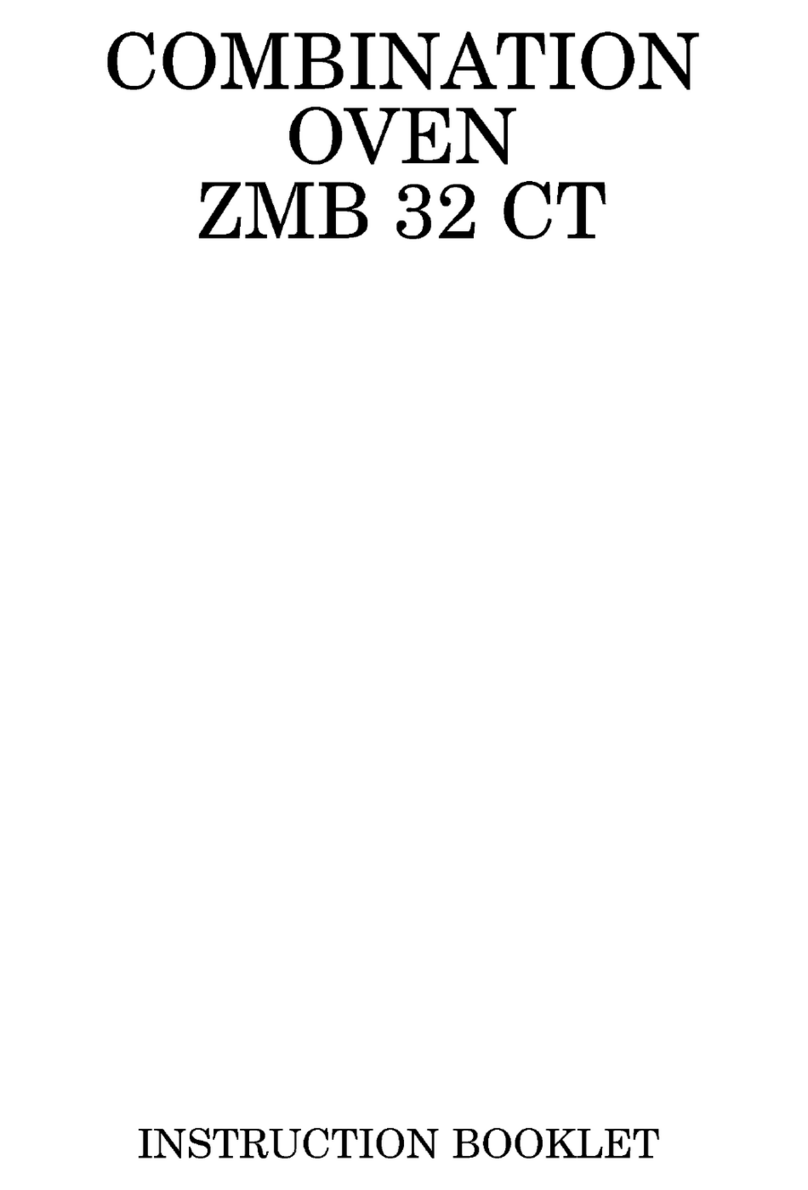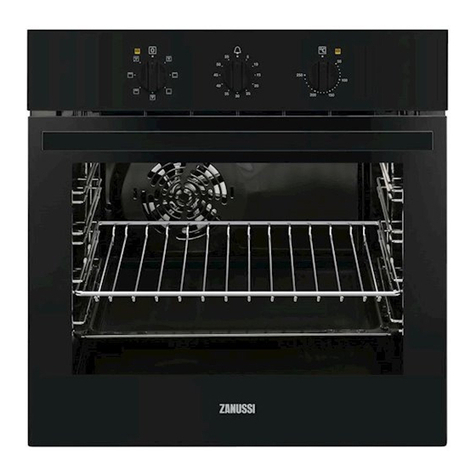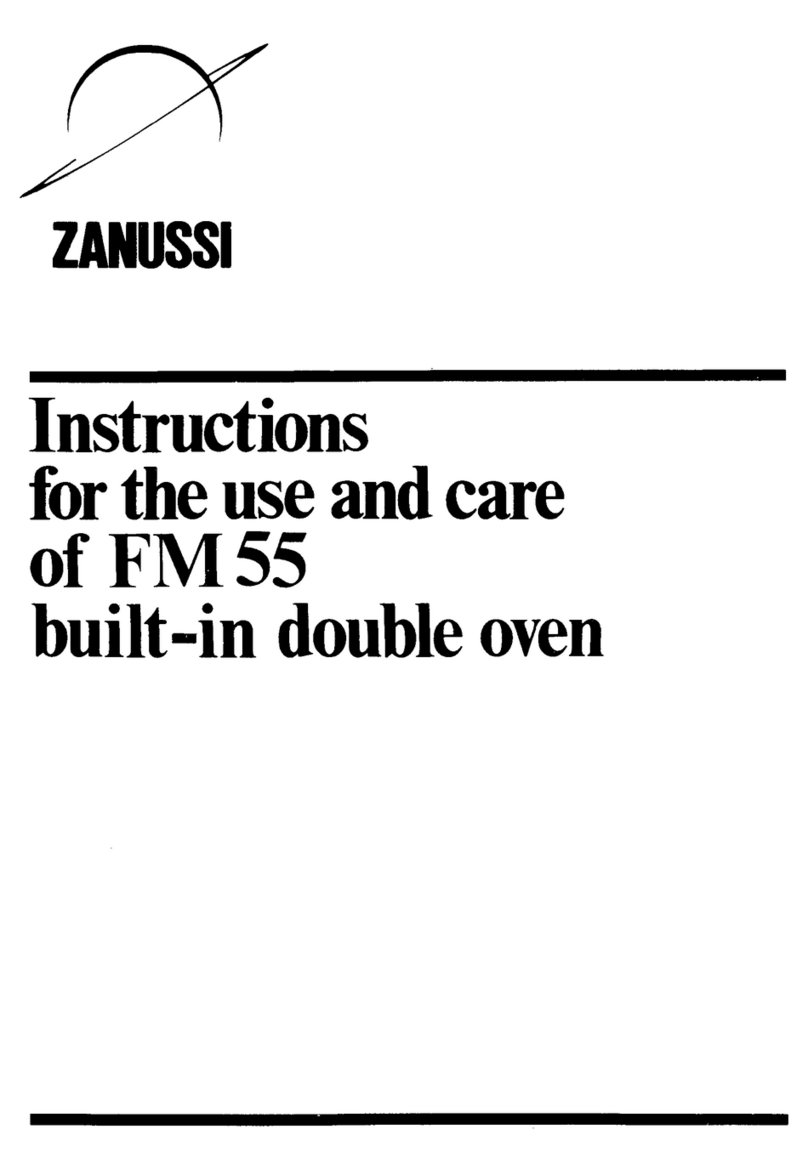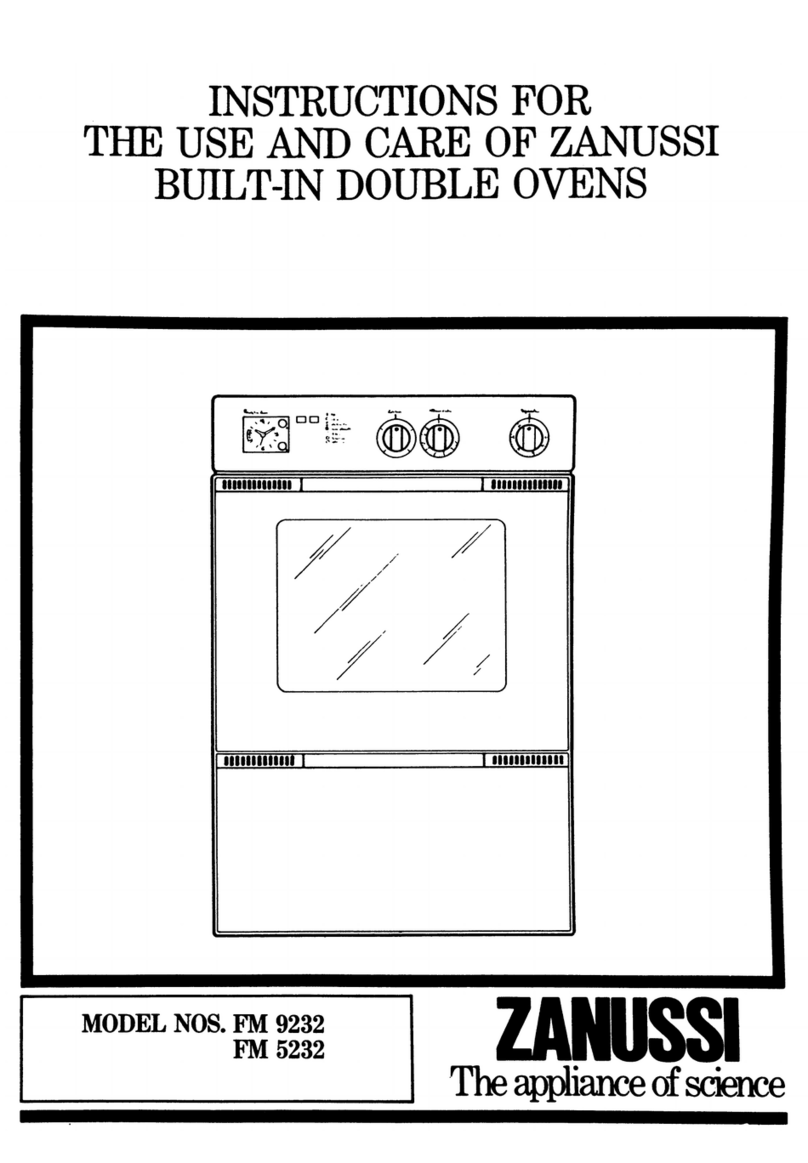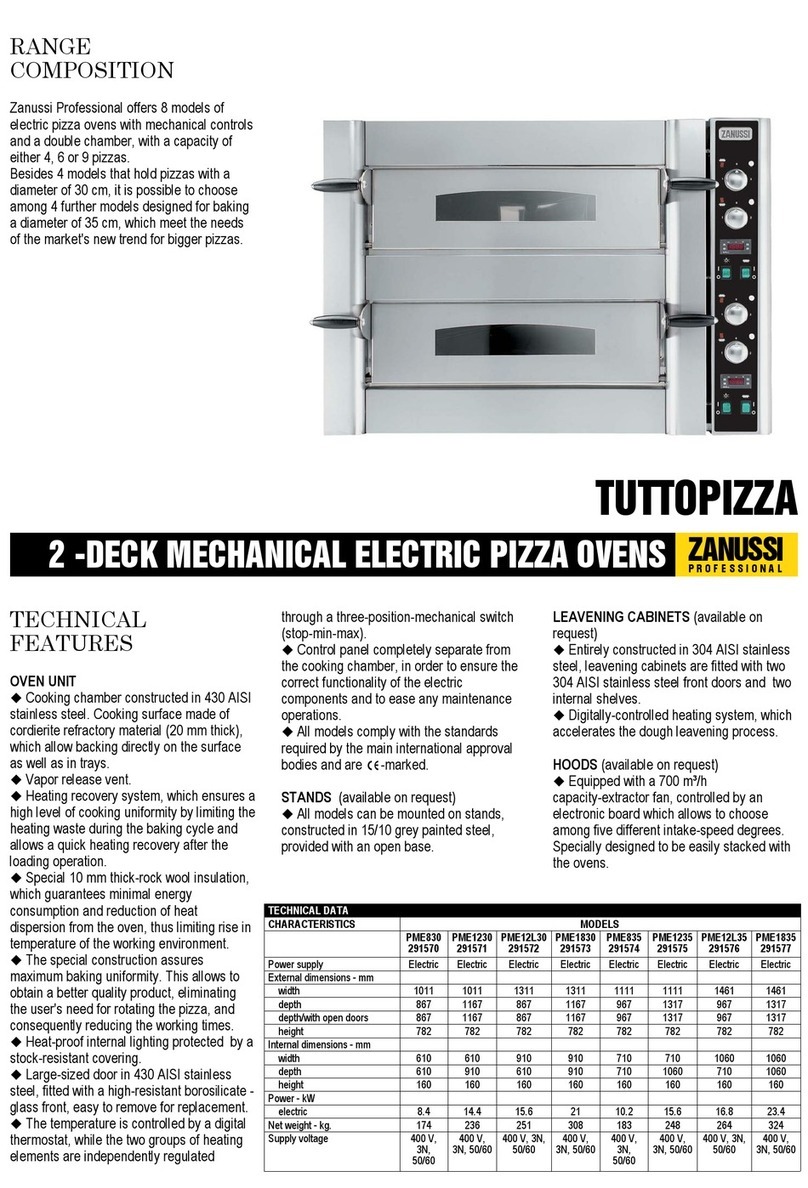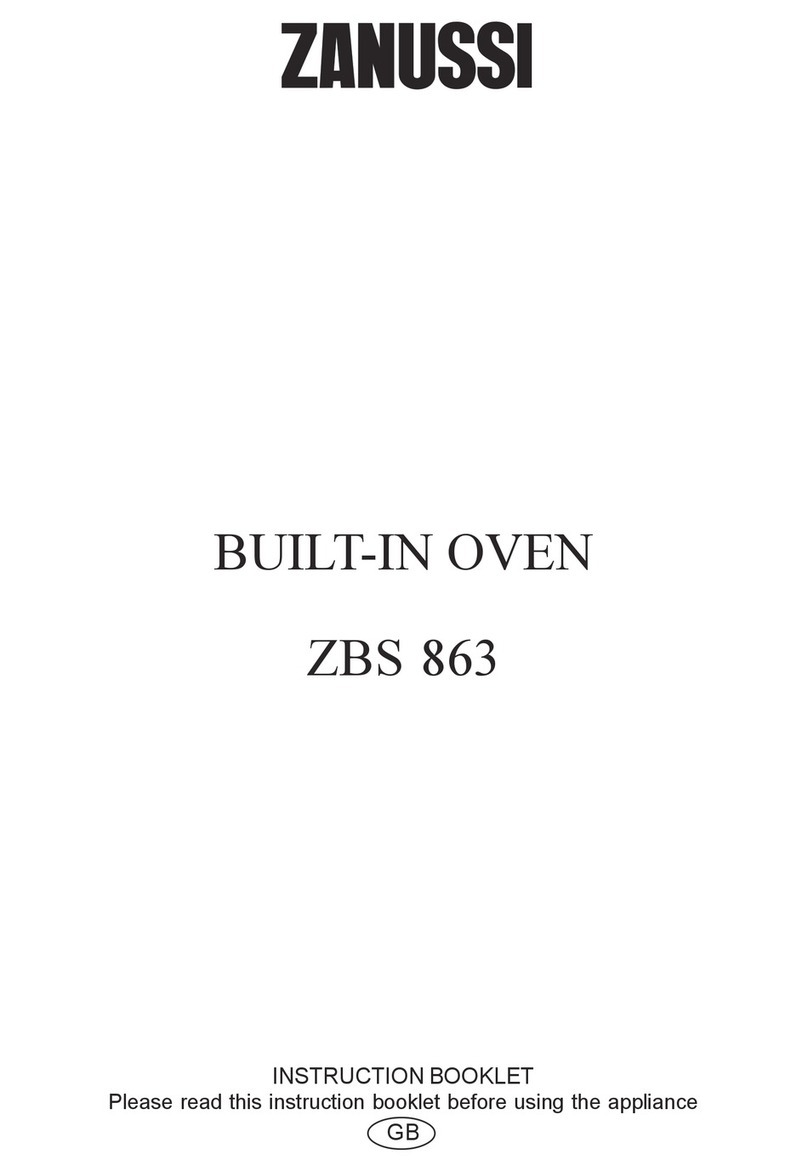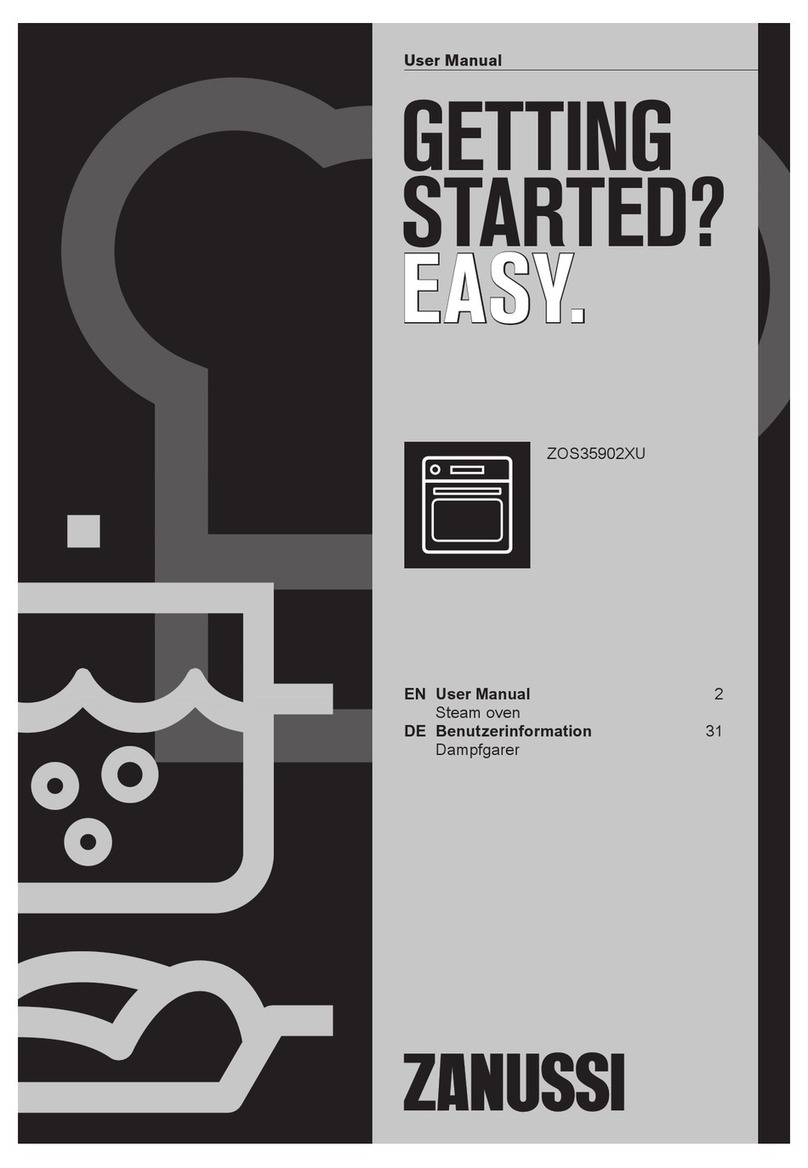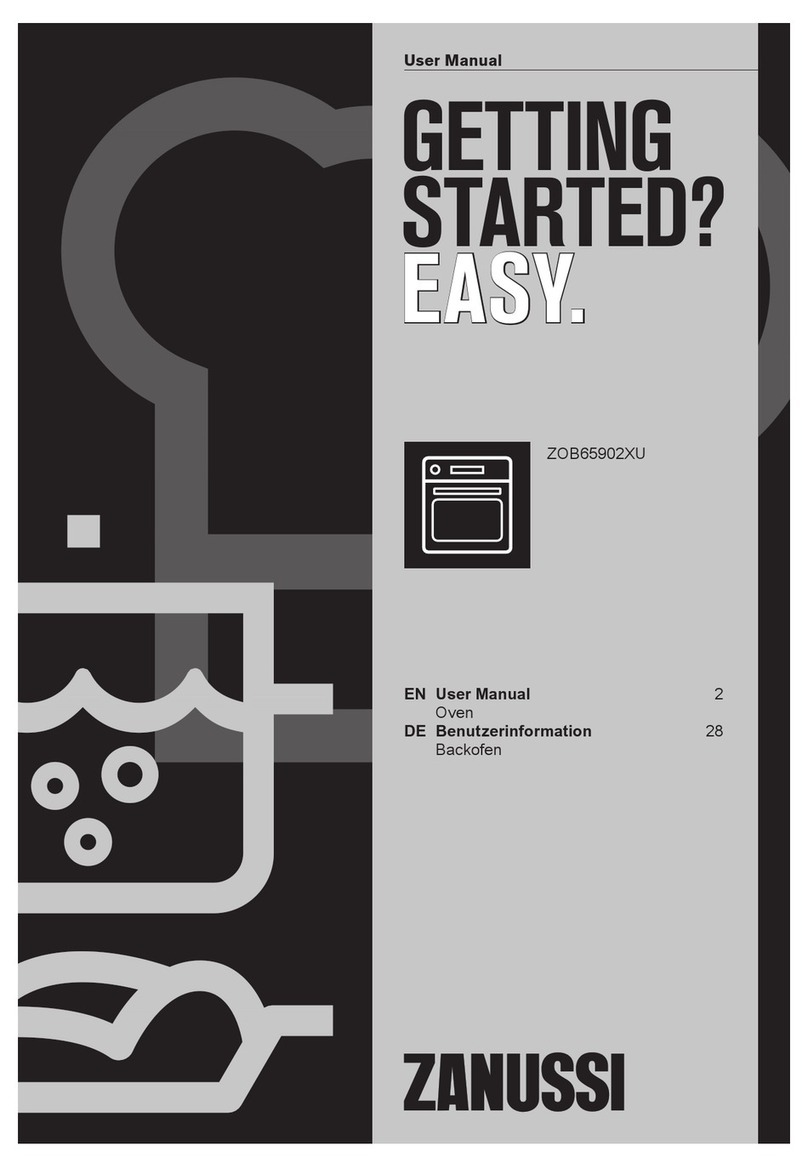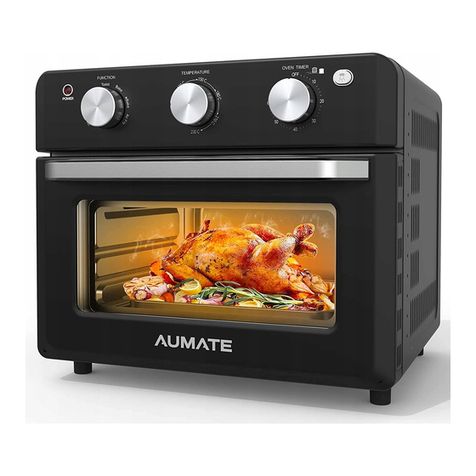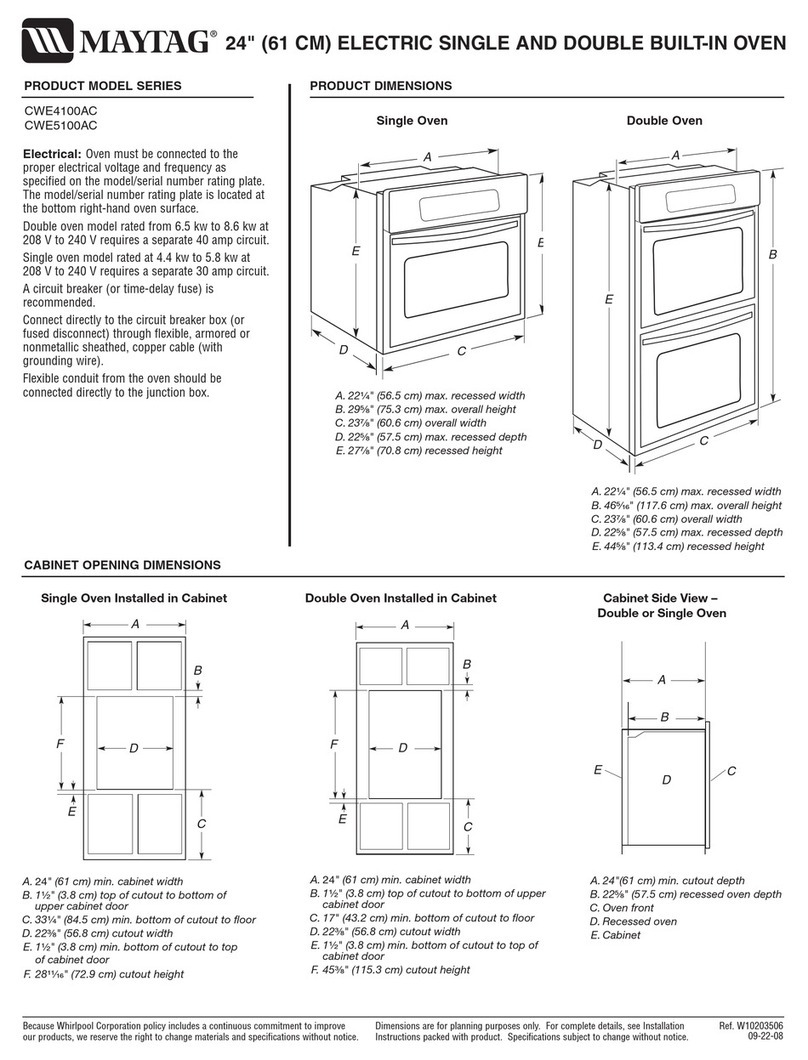10
The oven fan operates without heat and circulates the air,
at room temperature, inside the oven. This increases the
speed of defrosting. However, please note that the tem-
perature of the kitchen will influence the speed of defrosting.
This function is particularly suitable for delicate food
which could be damaged by heat, e.g. cream filled
gateaux, iced cakes, pastries, bread and other yeast
products.
How to Use Defrosting
1. Turn the oven function control knob to .
2. Ensure the thermostat control knob is in the OFF
position.
Cover food with a lid, aluminium foil or plastic film to
prevent drying out during defrosting.
ALWAYS COOK THOROUGHLY IMMEDIATELY
AFTER THAWI G.
Frozen food should be placed in a single layer when
ever possible and turned over half way through the
defrosting process.
Only joints of meat and poultry up to 2 kg. (4 lb.) are
suitable for defrosting in this way.
Refer to the following table for approximate defrosting
times.
Chic en 1000 g. 100-140 20-30 Place the chic en on an inverted
saucer on a large plate. Defrost
open and turn at half time or defrost
covered with foil. Remove giblets
as soon as possible.
Meat 1000 g. 100-140 20-30 Defrost open and turn at
half time or cover with foil
Meat 500 g. 90-120 20-30 As above
Trout 150 g. 23-35 10-15 Defrost open
Strawberries 300 g. 30-40 10-20 Defrost open
Butter 250 g. 30-40 10-15 Defrost open
Cream 2 x 200 g. 80-100 10-15 Defrost open (cream is
easy to whip even if parts
of it are still slightly frozen)
Ca e 1400 g. 60 60 Defrost open
Food Defrosting time
(Mins)
Standing time
(Mins) Notes
The times quoted in the chart should be used as a guide only, as the speed of defrosting will depend on the kitchen temperature.
For example, the colder the ambient temperature, the longer the defrosting time.
Defrosting
Hints and Tips
lRunner positions are not critical, but make sure the
shelves are evenly spread.
lWhen cooking more than one dish in the fan oven,
place dishes centrally on the shelves rather than
several dishes on one shelf.
lWhen the oven is full, you may need to allow slightly
longer cooking time.
lA shelf may be placed on the floor of the oven. Place
dishes on a shelf in this position rather than on the
oven base, to allow air circulation around the food.
lWhen the oven is full of the same food, e.g. equal trays
of small cakes or equal size victoria sandwich cakes,
then they will be cooked in the same time and removed
from the oven together. When different sizes of trays
Hints and Tips or types of food, e.g. biscuits and cakes are cooked,
they will not necessarily be ready together.
lThe fan oven can be used to heat foods through
without thawing first, e.g. fruit tarts, mince pies,
sausage rolls, and other small pastry items. Use a
temperature of 190-200°C and allow 20-40 minutes
(depending on the quantity of food in the oven).
lThe use of too high temperatures can cause uneven
browning. Check with the recommendations for oven
temperatures given in the cooking charts, but be
prepared to adjust the temperature by 10°C if
necessary. Remember to reduce temperatures by
about 20-25°C for your own conventional recipes.
lThe meat tin should not be placed on a heated
hotplate or burner as this may cause the enamel to
crack.




